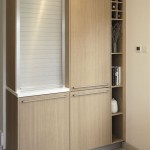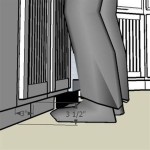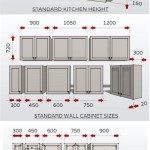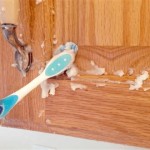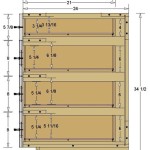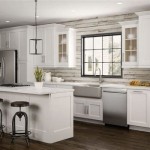Essential Aspects of How to Fit Kitchen Cabinet Brackets
Kitchen cabinet brackets play a crucial role in ensuring the stability and functionality of your kitchen cabinets. Fitting them correctly is essential to prevent cabinets from sagging, becoming misaligned, or even collapsing. This article explores the essential aspects of fitting kitchen cabinet brackets, providing a comprehensive guide to ensure a secure and durable installation.
1. Choose the Right Brackets
The first step is to select the appropriate brackets based on the weight and size of your cabinets. Different types of brackets, such as L-brackets, heavy-duty angle brackets, and concealed brackets, are available in various materials, including steel, aluminum, and plastic. Consider the load-bearing capacity of the brackets and match them to the weight of your cabinets to ensure sufficient support.
2. Determine Bracket Placement
The location of the brackets is critical for proper support. Measure and mark the positions for the brackets along the sides, top, and bottom of the cabinets. The brackets should be placed at regular intervals, ensuring even distribution of weight. Use a level to ensure that the cabinets will be level when installed.
3. Use Appropriate Hardware
Select the correct screws or bolts for the brackets and cabinet material. The screws should be long enough to penetrate the cabinet frame and secure the bracket firmly. Use a screwdriver or drill to drive the screws or bolts into place, ensuring they are adequately tightened.
4. Secure the Brackets
After positioning the brackets, secure them to the cabinets. Hold the bracket in place and align it with the screw or bolt holes. Tighten the screws or bolts gradually, alternating between each screw or bolt to evenly distribute the pressure. Avoid overtightening, as this can damage the cabinet or bracket.
5. Check Level and Alignment
Once the brackets are secured, use a level to check that the cabinets are level and aligned. If necessary, adjust the brackets or screws slightly to ensure proper alignment and prevent any gaps or uneven surfaces.
6. Reinforce if Needed
In some cases, additional reinforcement may be required, especially for heavier cabinets or those that will bear significant weight. Consider adding extra brackets or using heavy-duty brackets to provide enhanced support and prevent sagging or damage over time.
Conclusion
Fitting kitchen cabinet brackets is an essential task that requires attention to detail and proper execution. By considering these essential aspects, from choosing the right brackets to reinforcing if needed, you can ensure that your kitchen cabinets are securely installed, providing both functionality and durability for years to come.

Wall Unit Fitting Adjustments Diy Kitchens Advice

How To Install Kitchen Cabinets The Wall And Floor With Ease

Wall Unit Fitting Adjustments Diy Kitchens Advice

How To Install Kitchen Cabinets The Wall And Floor With Ease

How To Install A Wall Unit In Your Kitchen

Wall Unit Fitting Adjustments Diy Kitchens Advice

Wall Cabinet Suspension

Hafele Nylon Cabinet Bracket Plate Toolstation

How To Install Kitchen Cabinets The Wall And Floor With Ease

How To Install Cabinet Hinges A Step By Guide

